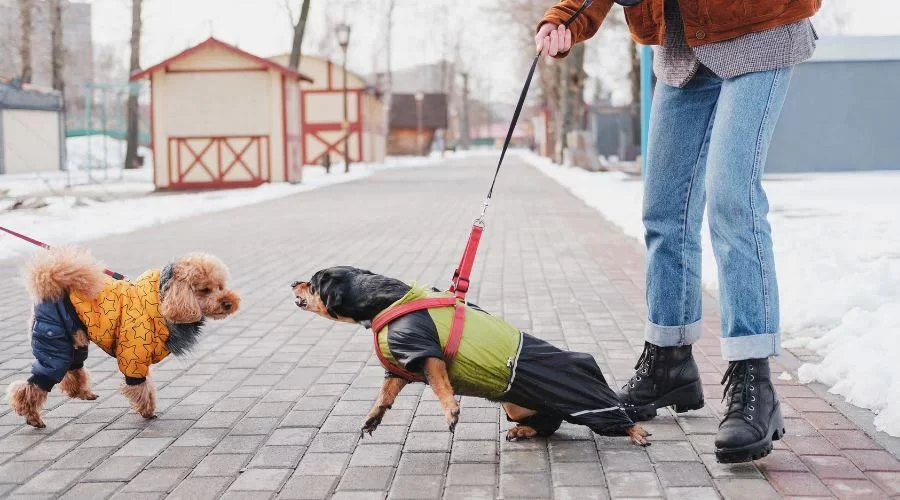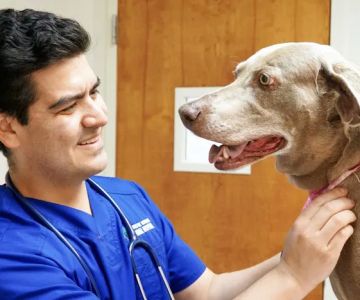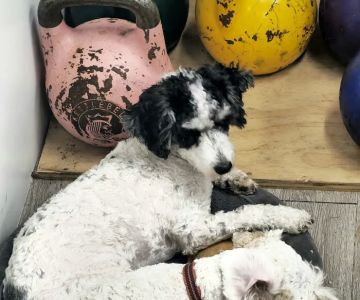How to Help a Dog Calm Down After a Walk: Practical Tips for Pet Owners
After a long walk, my dog, Max, would often seem overly excited, panting heavily and running around the house. As much as I enjoyed our walks together, I realized that he needed time to cool down and relax afterward. It wasn’t uncommon for him to still be full of energy, even after an hour-long stroll, and I knew that helping him calm down was essential for his overall well-being. If you’ve ever struggled with getting your dog to settle down after a walk, you’re not alone. In this article, I’ll share the techniques and strategies I used to help Max calm down after a walk, so that both of us could enjoy a more peaceful post-walk routine.
1. Understanding Your Dog’s Post-Walk Energy
Before we dive into how to calm your dog after a walk, it’s important to understand why dogs often have a burst of energy even after physical activity. Dogs, especially those with high energy levels, can sometimes seem to get more excited after exercise rather than calming down. This could be due to the natural release of pent-up energy, or because the walk has heightened their senses and curiosity.
In Max’s case, he was always highly stimulated after walks, and it was hard to get him to settle. I started noticing that he would continue running, jumping, and playing as if we hadn’t just walked miles together. I realized that this was a natural reaction, but it was up to me to help him unwind. Understanding the root cause of his excitement allowed me to be more patient and work on strategies to help him calm down after every outing.
2. Slow Down the Pace Towards Home
One of the first things I learned was that slowing down the pace on the way home made a big difference in Max’s post-walk behavior. During our walks, we would start with a brisk pace, but as we neared home, I began incorporating slower, more relaxed walking. This gradual deceleration gave Max a chance to wind down physically before we entered the house.
Dogs can sometimes become overstimulated if they’re too active right up until the moment they get inside. By slowing down the pace, I noticed that Max was less hyper when we got home, and this made the transition inside much smoother. If your dog tends to get overly excited, consider incorporating a slow-down phase toward the end of your walk to signal to them that the activity is coming to a close.
3. Use a Cool-Down Routine to Help Your Dog Relax
Just like humans, dogs can benefit from a cool-down routine after physical activity. When we’d return home from our walk, I would make sure to spend a few minutes helping Max transition from high energy to relaxation. I started incorporating some light stretching and slow movements, allowing Max to naturally relax after the walk.
For Max, this included simple activities like a gentle massage or brushing. As I brushed his fur, he seemed to relax, and his breathing slowed down. This quiet time helped him switch gears from excited to calm, and I noticed he would settle down much faster. You can also try gentle petting or low-energy play to help your dog transition back to a calm state. This helps release any remaining energy in a controlled way, allowing your dog to relax more easily.
4. Create a Comfortable Resting Spot
Having a designated, comfortable resting spot for Max after walks became essential in helping him calm down. I set up a cozy spot in a quiet part of the house with a soft bed and blankets, where he could relax and unwind. This “chill-out zone” became his go-to spot after every walk.
Creating a calm, designated space for your dog to rest can help them associate that spot with relaxation. Dogs, especially those who are high-energy, need a quiet, comfortable area to decompress after walks. I noticed that when Max had a specific place to go to after our walks, he would settle there more quickly, reducing his overall restlessness. Make sure the space is away from distractions and noise, allowing your dog to fully relax and rest.
5. Offer a Hydrating Snack or Treat
Sometimes, a little refreshment can go a long way in helping a dog calm down after a walk. I found that offering Max a small, hydrating snack—like a dog-friendly treat or some fresh water—helped him relax. After a walk, Max was often thirsty and a little hungry, so giving him something to enjoy while he settled down helped divert his focus from his excitement to something more calming.
If your dog enjoys treats, you can use this time to give them something special. However, make sure the treat is light and not too stimulating. I made sure to avoid treats that were too sugary or high in fat, as they could add to his energy. Instead, I opted for calming treats that were designed to relax dogs, such as those containing ingredients like chamomile or valerian root. These can be especially helpful if your dog has a tendency to get overly excited after walks.
6. Keep a Calm, Steady Demeanor
One of the most important lessons I learned was that my energy influenced Max’s behavior. If I was excited or moving too quickly, it would only increase his excitement. On the other hand, if I stayed calm, spoke in a soothing voice, and moved at a steady pace, Max would follow suit. Dogs are incredibly sensitive to their owners’ emotions and body language. By staying calm and relaxed, I was able to help Max do the same.
During the post-walk period, I made an effort to remain calm and give Max plenty of quiet praise, avoiding sudden movements or loud noises. This helped him associate my calm energy with relaxation. If you’re looking to help your dog calm down, try mirroring their calm behavior with your own. This consistency between your energy and theirs can help create a peaceful environment for both of you.
7. Monitor Your Dog’s Exercise Routine
Finally, it’s important to adjust your dog’s exercise routine based on their energy levels. Not all dogs are the same, and while Max needed long, stimulating walks, other dogs may need less strenuous activity to avoid overstimulation. If your dog seems overly hyper after walks, you may need to adjust the intensity or duration of the walks. It’s crucial to monitor your dog’s behavior and tailor their exercise routine accordingly.
If Max was particularly energetic on a given day, I’d shorten the walk or take a different route with fewer distractions. Finding the right balance of exercise and relaxation was key to ensuring that Max wasn’t overly exhausted or overly energized after walks. This consistency helped his overall behavior improve over time, and I found that Max was much calmer and more relaxed after walks when I adjusted his exercise to match his energy levels.












